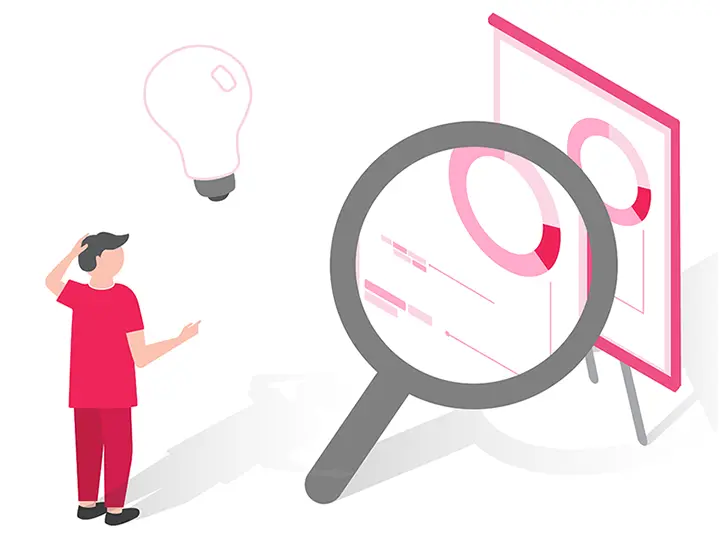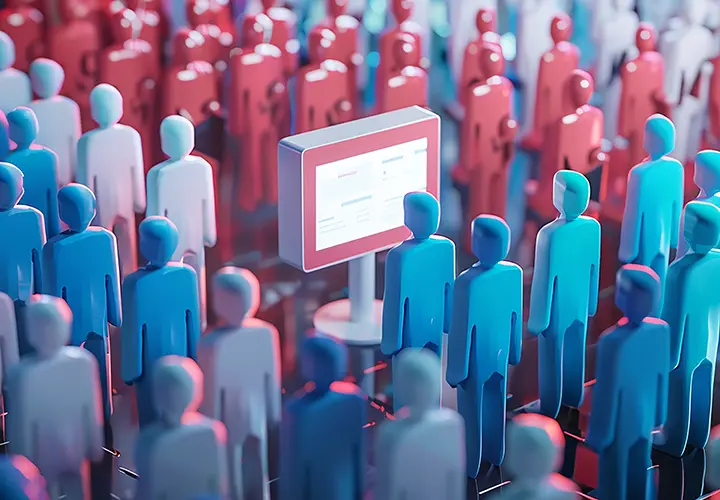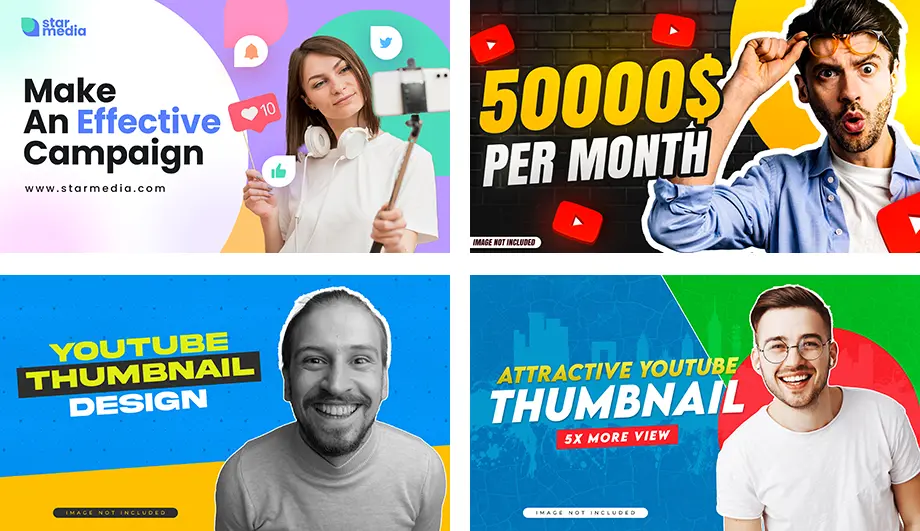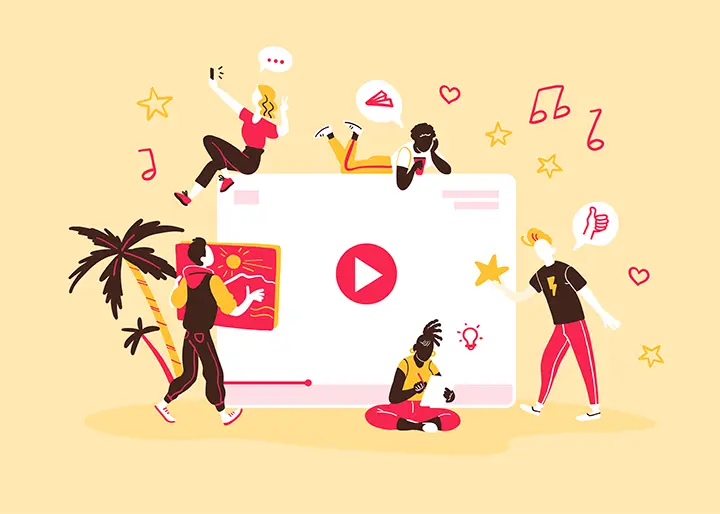Many people want to be successful YouTubers, but it's harder than it looks.
Creating good content requires a variety of skills, including scripting, storytelling, and video editing, and getting people to click on your videos requires even more skills, such as creating thumbnails and writing titles.
So how do you master all of this?
First, learn the right YouTube skills. You don't need to know everything about content creation, but you do need to have the right mix of hard and soft skills.
You need to understand how to conceptualize a video and how to use digital software to bring a story to life.
We also recommend you read the following articles
- The ultimate guide to becoming a YouTube creator: Step-by-step process and tips for success
- How to get more views on YouTube
What is a YouTuber?
A YouTuber is someone who publishes video content that you create on YouTube, a video sharing platform.
But beyond the commonality of using YouTube as a platform, YouTubers are very diverse. YouTubers are different in every way: age, race, education level, focus area, camera quality, and more. Some YouTubers make videos for fun as a hobby or side hustle, while others make it their full-time job.
Anyone who posts can be called a YouTuber, but the title is generally understood to mean someone who posts regularly to the platform.
How much do YouTubers make?
There are no hard numbers on exactly how much YouTubers make because there is no such thing as an average YouTuber.
YouTubers make money in a variety of ways. Successful YouTubers can earn money in the following ways
- Advertising - by joining the YouTube Partner Program.
- Affiliate sales - becoming an affiliate partner of a brand that sells products or services online
- Merchandise sales - selling your own merchandise, such as mugs, t-shirts, toys, etc.
- Licensing - licensing your content to media
- Sponsorships - creating sponsored content for brands
Most high-paying YouTubers use one or more of these methods to monetize their video content.
If you only consider earnings through the YouTube Partner Program, YouTube content creators earn an average of $18 per 1,000 views, which means that a YouTuber with 100,000 views in a month would earn a very modest $1,800.
How to become a YouTuber: 7 steps
There are 694,000 hours of video streaming on YouTube every minute. Here's how to add your video
1. Identify your niche

Saying you want to be a YouTuber is like saying you want to be a scientist or an astronaut, like your childhood dreams.
The first thing you need to decide is what kind?
There are many different kinds of YouTubers: makeup YouTubers, family YouTubers, gaming YouTubers, travel YouTubers, tech YouTubers, unboxing YouTubers, knitting YouTubers, scientist YouTubers, and so on. If you think about it, you have a niche.
A niche is an area of specialization, and narrowing down your niche makes it easier to identify your target audience and brainstorm content.
One of the best ways to choose a niche is to think about what you love - you want to create content that you're passionate about, that you're good at, and it should be fun!
2. Define your "why" for podcasting
You don't just become a YouTuber because you like your voice, there's a reason you're podcasting. Defining what purpose your videos will serve - what value they will provide to your audience - is an important starting point.
The answer to the "why" question - figuring out what value your YouTube channel will provide - doesn't have to be value in the traditional sense.
Sure, there are plenty of channels that offer expertise, product reviews, how-to videos, tutorials, and other traditional "why" content. But your "why" can also be simply to make people laugh.
Rob Kenney's viral channel, "Dad, how do you do it?" started with the goal of creating easy how-to videos on tasks traditionally taught by dads, such as how to use a level, how to get gas, and how to fish.
Today, over 4 million "kids" (subscribers) watch his videos because he teaches essential skills in an accessible way.
On the other side of YouTube is Bad Lip Reading, a channel that dubs ridiculous lines from NFL games, Broadway shows, politics, and more.
Why? Because it's hilarious.
3. Know your audience
You won't get thousands of YouTube subscribers or millions of views overnight, but regardless of the size of your audience, it's important to know who you're creating videos for and what kind of content they like.

Ask yourself
- Who will watch my videos?
- How old are my viewers?
- What kind of job do they have?
- What time of day do they watch videos?
- Why do they watch videos?
- What will they get out of watching your video?
Questions like these go a long way toward building trust with your viewers. Try to put yourself in the shoes of the person watching your video.
4. Know your competition
Who are you competing with? Or to put it in a less combative way: Who can you learn from?
Identify your competitors - other creators in the same or similar niche as you - and get inspired by their strategies.
They may be using similar strategies:
- Video effects (e.g., visual and sound effects)
- Video format (e.g., Q&A, expert interview, storytime)
- Filming locations (e.g., studio, outdoor, on set)
- Sets (e.g. home, workplace, designed sets, animated)
5. Create your YouTube channel
Now that you're all set, it's time to create your YouTube channel. Here's how to create one.
First, you'll need
- A channel name
- A logo
- A banner image (2560×1440 pixels is ideal)
- A color scheme
6. graphic design (thumbnail)

Before people watch a video, they look at the thumbnail to see how attractive the video is.
They might read text in the image that better describes the video, or they might see symbols that emphasize the main idea, such as a puppy, a tennis racket, or a character from Minecraft. These visual cues help people decide whether or not to click.
Fortunately, you don't have to be a graphic designer to create a good YouTube thumbnail. You just need to know the basics of design, such as using the right colors and incorporating negative space to simplify the image.
7. creativity (unique videos for ideas)
Many people think of creativity as a rare stroke of genius or a brief moment of inspiration, but it's a more common ability than that.
You can boost your creativity by creating video ideas every day.
The good news is that not all ideas have to come from your head - you can find inspiration in many corners of the internet, including
- TikTok
- Google Trends
- Discord
Helpful resources on how to succeed as a YouTuber
YouTube has channels dedicated to helping creators succeed with key metrics, analytics, misconceptions, algorithms, thumbnails, and more.
These subscriber channels often discuss how people think YouTube works, and these videos are really helpful because they come directly from YouTube.
Here are a few of the most important things that I think are covered in this article

1. the algorithm
The algorithm is very complex, but the basics are pretty simple. YouTube tries to find videos that you want to watch based on your viewing history, search history, and the videos you haven't clicked on. YouTube wants to find the best content for viewers based on their individual profiles.
There are many reasons why a video might not be performing well, but simply put, it could be because people don't want to watch it or there are better videos on the same topic.
It's important to keep in mind that your content is competing with all of the other content out there. If your video is underperforming, it's because YouTube doesn't see the value in your video. If you consistently have underperforming videos, it means there are things you can do to improve to get better views and attract more viewers.
2. Posting frequency
The algorithm has nothing to do with posting frequency, YouTube says it depends on the expectations of your audience as some audiences, niches may react differently, but there is no code inside the algorithm that rewards channels that post more often.
3. vacation
This was mentioned in the 3 videos we watched earlier, and they all said that taking a break from uploading videos for 2 weeks to a month or so doesn't have a long-term effect on your channel. In fact, they even said that they've seen many channels that have seen an increase in views when they returned after taking a break.
Perhaps it's because these creators were recharged and created better content, or maybe it's because their audience missed them and there was more demand.
4. Tags
I found tags to be mostly useless.
5. video length
There is no code in the algorithm to reward long videos. We used music videos and popular short videos as proof that short videos can be very successful. They say don't pad your video to make it longer.
He said that AVP (average view percentage) is more important for short videos, and AVD (average view duration) is more important for long videos, because he has seen many videos fail when users pad their videos.
6. all caps
They have a list of things that users don't want, and one of the big ones was capitalized titles.
In fact, their user research shows that people don't like capitalized titles, so they don't recommend these videos very often.
7. Don't delete old videos
It doesn't matter if you have old videos on your channel that aren't performing well - there's no reason to delete them, and every video is a chance to be viewed, so the more content you have, the better chance you have.
8. Is it harder to succeed on YouTube now?
An employee at YT looked at some key metrics, one of which was the number of channels breaking 100,000 subscribers and 100,000 hours of daily watch time.
He said that across all channels, the number of people crossing these thresholds has increased by 40% over the past few years, which means that more channels are succeeding than ever before. However, he also mentioned that some niches are becoming saturated and competitive, so it's important to find niches with opportunities for growth.
9. Why are videos suddenly getting views after months of no views?
There are a number of reasons. YouTube continuously tests videos with "seed audiences" over time.
With each seed audience, we learn more and more about your video and figure out what the right audience is for it. For the first few months, you might have been testing your videos with an audience that didn't find them interesting, and then one day you found an audience that loved them. Your videos might also have a hot topic that's more popular right now. Or maybe people found them useful as they learned more about your channel.
It's very rare for this to happen after a few months, so you shouldn't worry too much about finding the wrong "seed audience" on YouTube.
If this happens, it's usually because your videos are unusual or different from others, or because you're a really young channel with only a few videos.
10. subscribers
A few years ago, the homepage focused on the channels that users subscribed to. This is when YouTube was really focused on subscribers. However, over time, YouTube has learned that users often watch content that they don't subscribe to. So now the homepage focuses more on what users actually watch rather than what they subscribe to. This means that subscribers are less important than they were 10 years ago.
11. Will one bad video hurt my channel?
The algorithm doesn't allow this to happen. The only time this happens is if one video offends the entire audience. We say that if you have an occasional underperforming video, it's nothing to worry about. However, if you have videos that consistently underperform over time, it means that there are areas you can improve.
Thank you.



